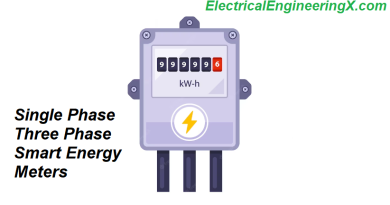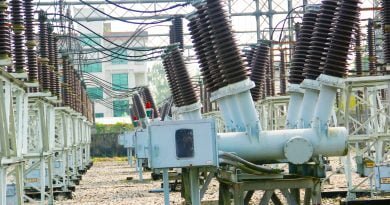The Different Types of Diodes and Their Applications
The Different Types of Diodes and Their Applications
Outline:
- Introduction to Diodes
- What are diodes?
- How do they work?
- Types of Diodes
- Zener diodes
- Schottky diodes
- Light emitting diodes
- Photodiodes
- Varactor diodes
- Diode Characteristics
- Forward voltage
- Reverse breakdown voltage
- Switching speed
- Diode Circuit Symbols
- Cathode and anode
- Different symbols
- How Diodes Allow Current to Flow
- Semiconductor doping
- Depletion region
- Forward bias
- What Happens When Reverse Biased
- Depletion region widens
- Very small leakage current
- Diode Specification Considerations
- Peak inverse voltage
- Maximum forward current
- Switching speed
- Temperature range
- Series and Parallel Diode Circuits
- Increasing voltage handling
- Redundancy and failure protection
- Diode Clipper and Clamper Circuits
- Clipping input signals
- Clamping voltage levels
- Single and Dual Supply Rectifier Circuits
- Converting AC to DC
- Voltage multipliers
- Protecting and Regulating with Zener Diodes
- Voltage regulation
- Transient suppression
- Demodulating Signals with Diodes
- AM radio demodulation
- Peak detectors
- Lighting Elements and Sensors
- LEDs for illumination
- Photodiodes for lighting control
- Variable Capacitance with Varactors
- Tuning filters or oscillators
- The Future of Diode Technology
- Gallium nitride diodes
- 2D material diodes
The Different Types of Diodes and Their Applications
Diodes are fundamental passive components that allow current to flow in only one direction. They have many uses across all kinds of electrical and electronic circuits. This guide provides an overview of the major types of diodes and how they are applied.
Introduction to Diodes
A diode is a two-terminal electronic component that only conducts current in one direction. It acts like an electrical one-way valve.
Diodes consist of a junction between P-type and N-type semiconductor materials. They leverage the nonlinear current-voltage characteristics of the PN junction under forward and reverse bias to rectify AC signals or regulate voltage levels.
The ability of diodes to control current flow makes them incredibly useful devices. Let’s look at the main varieties and their applications.

Types of Diodes
Here are some of the most common diode types used in electronics:
- Zener Diodes– Regulate voltage levels and withstand reverse breakdown
- Schottky Diodes– Faster switching action with lower forward voltage
- Light Emitting Diodes– Emit light when forward-biased
- Photodiodes– Generate current when exposed to light
- Varactor Diodes– Exhibit variable capacitance dependent on bias voltage
There are many more special-purpose diode varieties, but these encompass the types you’ll encounter most often.
Diode Characteristics
Key diode performance parameters include:
- Forward Voltage– Voltage drop across a diode in forward conduction (~0.7V for silicon)
- Reverse Breakdown Voltage– Maximum reverse voltage before diode conducts (-5V to -200V typical)
- Switching Speed– Fast (nanoseconds) for Schottky diodes, slower for others
Analyzing diode characteristics helps determine suitable applications.
Diode Circuit Symbols
Diodes are represented in circuit diagrams using various symbols:
- Cathode– Cathode terminal marked with solid bar (arrow points in the direction of conventional current)
- Anode– Anode terminal unlabeled
- Different symbols– Vary by diode type (Zener, LED, Schottky, etc.)
Recognizing diode schematic symbols is key for analyzing circuits.
How Diodes Allow Current to Flow
Diodes conduct due to their semiconductor material properties:
- Semiconductor Doping– P-type and N-type regions result in a PN junction
- Depletion Region– At the junction, diffusion of carriers creates a depletion zone absent of free charges
- Forward Bias– Under forward voltage, reduction of the depletion region allows current
Forward biasing the PN junction enables a diode’s intended conduction.
What Happens When Reverse Biased
Under reverse bias, diodes block:
- Depletion Region Widens– External reverse voltage widens the depletion zone
- Very Small Leakage Current– Only nanoamp scale leakage current can flow
So, in summary, reverse bias prevents significant conduction. The diode becomes an open circuit.
Diode Specification Considerations
Key diode parameters to check based on your application:
- Peak Inverse Voltage– Maximum reverse voltage the diode can withstand
- Maximum Forward Current– Highest forward current before damage occurs
- Switching Speed– Important for fast switching power supplies and logic
- Temperature Range– Some diodes rated for operation up to 300°C
Series and Parallel Diode Circuits
Connecting diodes in series or parallel configurations enables:
- Increased Voltage Handling– Diodes in series withstand greater reverse voltages
- Redundancy and Failure Protection– Parallel diodes provide backup conduction paths
Series arrangements reach higher voltages. Parallel improves reliability and current capacity.
Diode Clipper and Clamper Circuits
Diodes alter input signals:
- Clipping Circuits– Diodes clip portions of input waveform exceeding voltage thresholds
- Clamper Circuits– Shift alternate halves of an AC input signal up or down to clamp the waveform
Clipping and clamping reshape waveforms for further processing or analysis.
Single and Dual Supply Rectifier Circuits
Rectification converts AC to DC:
- Converting AC to DC– Rectifier diodes allow only one polarity of AC signal to pass
- Voltage Multipliers– Cascaded rectifier diode stages multiply an AC input to higher DC levels
Rectifying diodes produce the DC outputs that power so many electronic systems.
Protecting and Regulating with Zener Diodes
Zener diodes enable:
- Voltage Regulation– Zener diodes conduct under reverse breakdown to clamp voltage swings
- Transient Suppression– Shunting voltage spikes to the ground protects sensitive components
Zener diodes regulate levels and protect circuits from damaging voltage fluctuations.
Demodulating Signals with Diodes
Diodes recover baseband information from modulated waves:
- AM Radio Demodulation– Diode rectification extracts audio from amplitude-modulated radio signals
- Peak Detectors– Charge storage at the diode captures peak amplitudes of pulse waveforms
Diode signal demodulation recovers important data from modulated carriers.
Lighting Elements and Sensors
LEDs and photodiodes convert light:
- LEDs for Illumination– Forward-biased LEDs emit colored light for indicator lamps or displays
- Photodiodes for Lighting Control– Generate current to turn lights on/off based on ambient light automatically
Diodes enable the conversion between optical and electrical domains.
Variable Capacitance with Varactors
Varactor (variable capacitance) diodes:
- Tuning Filters or Oscillators– Bias voltage varies the diode’s internal capacitance for frequency tuning
Varactors bring analog tunability to RF circuits.
The Future of Diode Technology
Diodes continue advancing through:
- Gallium Nitride Diodes– Fast switching, high-temperature performance
- 2D Material Diodes– Properties of graphene and molybdenum disulfide explored for next-gen diodes
Diodes remain a ubiquitous component at the core of modern electronics and electrical systems. Ongoing innovations will improve diode performance in the future.
Frequently Asked Questions
How do I determine diode polarity?
Use a multimeter in diode test mode. The positive test lead aligns with the anode when forward-biased and lit. The cathode is the negative terminal.
When would I use a Schottky diode versus a regular diode?
Schottky diodes are preferred for faster switching lower voltage applications like switch mode power supplies and clamping.
How do varactor diodes allow tuning analog circuits?
Varactors exhibit variable capacitance depending on the reverse bias voltage applied. This allows analog tuning of LC oscillators and filters.
What is the diode leakage current?
A small reverse saturation current flows when reverse-biased due to minority carriers. Zener diodes have higher controlled reverse leakage, enabling voltage regulation.
Can a diode replace a transistor in switching circuits?
For very simple on/off switching, a diode may suffice. But transistors allow signal amplification and higher complexity, not achievable with a diode.




